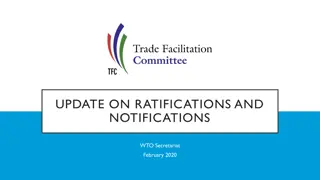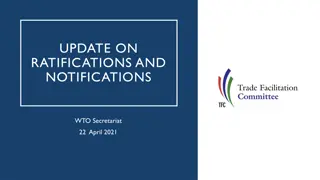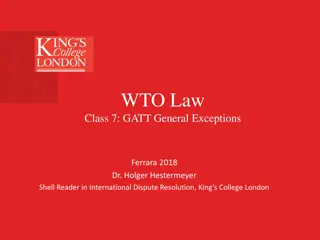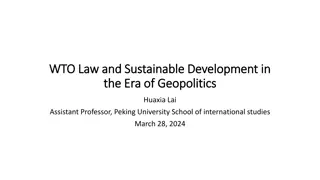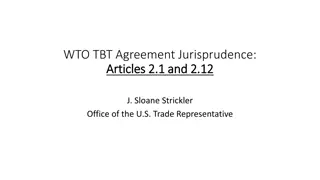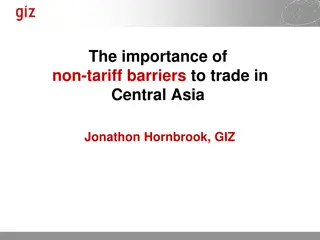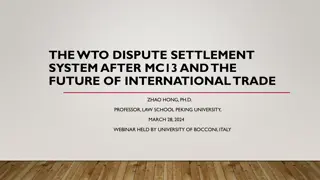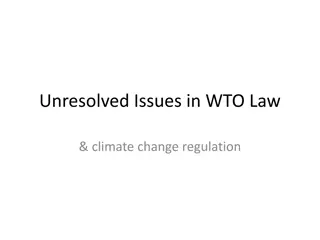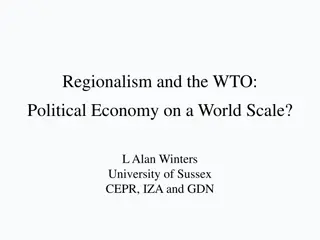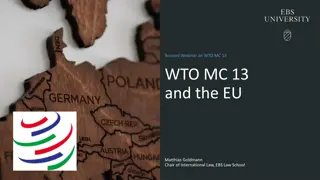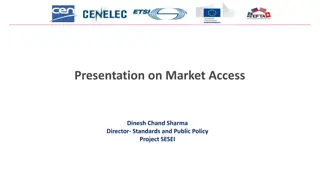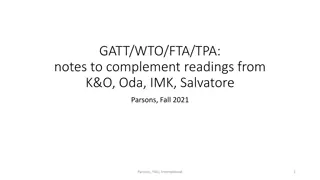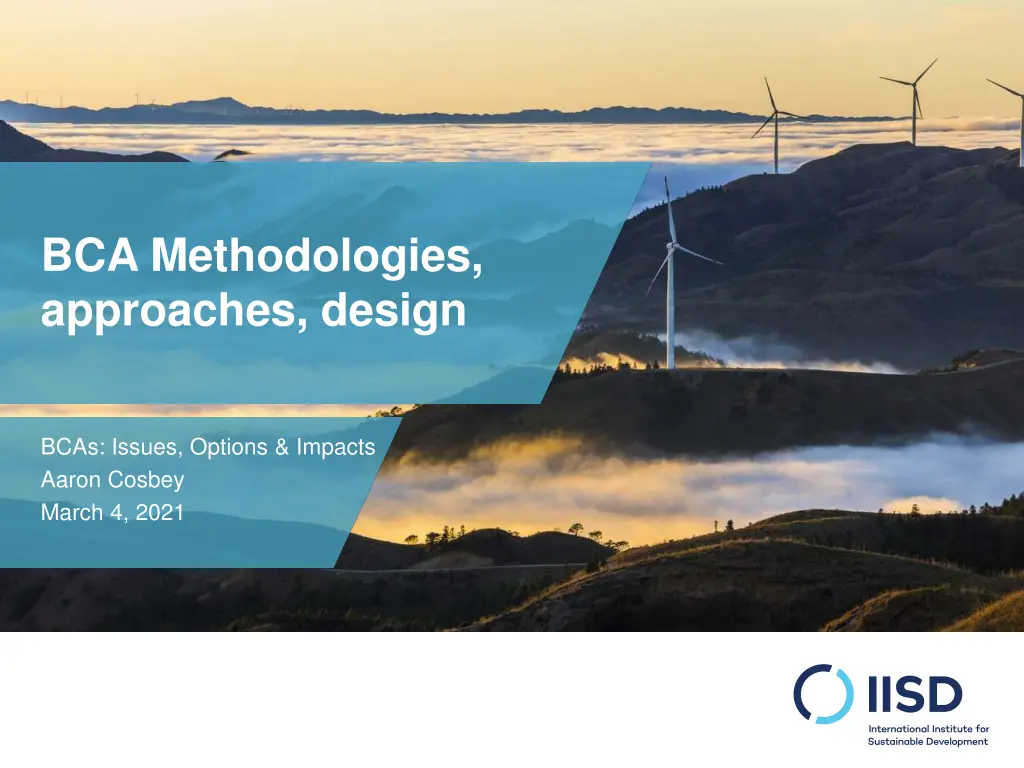
Understanding BCA Design Elements
Explore the key design elements of BCA methodologies, approaches, and impacts, including policy instruments, sectoral scope, geographic considerations, and more. Dive into the complexities of balancing climate goals with trade considerations.
Download Presentation

Please find below an Image/Link to download the presentation.
The content on the website is provided AS IS for your information and personal use only. It may not be sold, licensed, or shared on other websites without obtaining consent from the author. If you encounter any issues during the download, it is possible that the publisher has removed the file from their server.
You are allowed to download the files provided on this website for personal or commercial use, subject to the condition that they are used lawfully. All files are the property of their respective owners.
The content on the website is provided AS IS for your information and personal use only. It may not be sold, licensed, or shared on other websites without obtaining consent from the author.
E N D
Presentation Transcript
BCA Methodologies, approaches, design BCAs: Issues, Options & Impacts Aaron Cosbey March 4, 2021
Context BCA is not a single thing it s more like a decision tree So hard to say in the abstract whether it succeeds at preventing leakage, protecting competitiveness, abiding by WTO law That kind of assessment is only possible when looking at specific design elements
Eight design elements Policy instrument Coverage of trade flows Geographic scope Sectoral scope Emissions scope Calculating embedded emissions Crediting for foreign policies Use of revenues
1. Policy instrument BCA is an accompaniment for ambitious climate policy What does it accompany? Carbon tax, Emissions Trading System, non-price-based regulations? The policy instrument matters. Legally, probably can t rebate on exports if it s ETS. Hard to see how to do it at all if it s not based on carbon pricing the US dilemma.
2. Coverage of trade flows All BCA proposals cover imports. The question is whether they also cover exports. If not, then they leave any export-oriented firms at risk of leakage. But is export coverage legal? As above, probably not if it s an ETS. And maybe not even if it s a tax unclear.
3. Geographic scope Will any countries be exempt on the basis of criteria like less developed status, or adequacy of climate ambition (e.g., ambitious NDC under Paris Agreement)? Problem: MFN violation; needs saving by GATT Article XX, perhaps Enabling Clause Problem: Implementing country has to judge adequacy of others climate efforts: counter to the spirit of Paris Agreement, and creates GATT Art XX problems
4. Sectoral scope What sectors should be covered? From the perspective of preventing leakage: cover them all. Tension: environmental gain vs administrative feasibility. Extremely difficult to cover manufactured goods. Easier to cover just upstream commodities. And that s where the most emissions-intensity is. Typical subjects of BCA: steel, chemicals, fertilizers, aluminum, cement, pulp & paper, fuels (sometimes electricity) Problem: upstream BCA in sectors with long and complex downstream value chains (e.g., chemicals, steel) is a recipe for leakage and de- industrialization in the processing/manufacturing sectors .
5. Emissions scope Scope 1: Scope 2: Emissions from purchased electricity, steam, heat Direct emissions (from industrial processes) Scope 3: Other indirect emissions (e.g., from purchased inputs, transport, consumption) Scope 1 always included. Scope 2 probably should be if not, leakage potential. Scope 3 questionable maybe input goods?
6. Calculating embedded emissions A: Product-based: demand data on actual emissions for each shipment, or each facility B: Benchmark: set a default value, based on existing performance (e.g., global average, domestic 80th percentile) C: Hybrid: use general benchmark for scope 1, create regional or national default for scope 2 Option: allow producers to challenge any benchmark with verified data
7. Crediting for foreign policies From an environmental perspective, crediting should occur, or low-carbon producers are penalized But not for non-price-based policies: only credit for the equivalent of the underlying policy measure Extremely complex: needs a bilateral negotiation of equivalency for each trading partner Gives rise to risk of resource shuffling : rearrangement of trade flows with no final effect on GHG emissions
8. Use of revenues Keep it, or give it away? Keep it: general revenues, or hypothecated to some climate-related fund Give it away: to multilateral climate fund (GCF, AF), or somehow help exporters overcome the BCA barriers Problem: Very tempting to keep it. Potential major revenue source. And domestic constituents don t want to see it sent abroad. But bad optics for trading partners; potential GATT Article XX problems.
Thanks Aaron Cosbey aaronc@iisd.org

